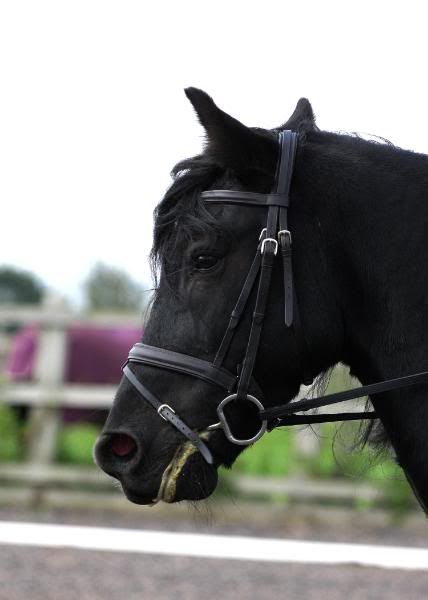Post by bellajack on Apr 5, 2007 2:16:43 GMT -1
The Royal Veterinary College Laminitis Conference Part 7
Predicting Increased Risk in the Individual Horse
The speaker for this section was:
Jonathon Elliott MA VetMB PhD CertSAC DECVPT MRCVS
For biography please see section 2.
Any horse can get laminitis.
The majority of cases in the UK and US occur at pasture, but certain individuals tend to be more affected than others.
Identifying individual animals at risk is an important aim, before they suffer episodes of laminitis, because of the likelihood of further incidence and the difficulties treating and managing the chronic laminitic.
THEORETICAL RISK FACTORS:
Theoretically many different factors could contribute to susceptibility to laminitis in the individual. These may include different bacterial gut flora with inadequate pH buffering capacity or increased production of trigger factors.
Liver function may be impaired or differences may exist in the responsiveness of blood vessels to vasoconstrictors or the response of lamellar tissues to toxic insult or the rush of blood back to the feet in an acute attack.
Subclinical laminitis may be of significance.
Foot conformation may be associated with severity of laminitis.
PROVEN RISK FACTORS:
Metabolic and endocrine differences do convey increased risk.
Cushings disease (PPID) is a well known risk factor for laminitis, but an increasing number of horses are now being recognised as being predisposed due to hyperinsulinaemia but do not have evidence of Cushings in clinical tests. The term 'prelaminitic metabolic syndrome' (PLMS) has been used to describe them.
Abnormal fat deposition and a cresty neck appearance may be considered to be diagnostic.
Insulin resistance is a key feature of this syndrome (PLMS) but no tests for this are yet available for use in veterinary practice.
THE FUTURE:
Testing for laminitis risk in the future may include genetic testing.
The optimum method for testing for PLMS in the future is likely to include genetic screening. This will allow young, at risk animals to be identified and insulin resistance to be prevented.
Ultimately it may lead to breeding strategies to eliminate this syndrome from breeds.
Predicting Increased Risk in the Individual Horse
The speaker for this section was:
Jonathon Elliott MA VetMB PhD CertSAC DECVPT MRCVS
For biography please see section 2.
Any horse can get laminitis.
The majority of cases in the UK and US occur at pasture, but certain individuals tend to be more affected than others.
Identifying individual animals at risk is an important aim, before they suffer episodes of laminitis, because of the likelihood of further incidence and the difficulties treating and managing the chronic laminitic.
THEORETICAL RISK FACTORS:
Theoretically many different factors could contribute to susceptibility to laminitis in the individual. These may include different bacterial gut flora with inadequate pH buffering capacity or increased production of trigger factors.
Liver function may be impaired or differences may exist in the responsiveness of blood vessels to vasoconstrictors or the response of lamellar tissues to toxic insult or the rush of blood back to the feet in an acute attack.
Subclinical laminitis may be of significance.
Foot conformation may be associated with severity of laminitis.
PROVEN RISK FACTORS:
Metabolic and endocrine differences do convey increased risk.
Cushings disease (PPID) is a well known risk factor for laminitis, but an increasing number of horses are now being recognised as being predisposed due to hyperinsulinaemia but do not have evidence of Cushings in clinical tests. The term 'prelaminitic metabolic syndrome' (PLMS) has been used to describe them.
Abnormal fat deposition and a cresty neck appearance may be considered to be diagnostic.
Insulin resistance is a key feature of this syndrome (PLMS) but no tests for this are yet available for use in veterinary practice.
THE FUTURE:
Testing for laminitis risk in the future may include genetic testing.
The optimum method for testing for PLMS in the future is likely to include genetic screening. This will allow young, at risk animals to be identified and insulin resistance to be prevented.
Ultimately it may lead to breeding strategies to eliminate this syndrome from breeds.




